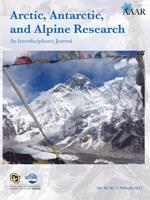We tested the main hypothesis that nutrient accumulation during late stages of postglacial succession would decrease nutrient limitation of diazotrophic activity. We tested this hypothesis by adding carbon (C), phosphorus (P), and molybdenum (Mo) independently or in combination, and nitrogen (N) only to symbiotic, epiphylls on bryophytes, and free-living diazotrophs in three stages of glacier foreland succession in Cordillera Darwin (55°S), southern South America. Experiments were run in spring 2013 and 2014 and in autumn 2015. Diazotrophic activity (DA) was assessed by the acetylene reduction assay. Results showed no effect of C, P, or Mo added either singly or in combination in the spring incubations. During autumn, DA was enhanced by adding a mix of C, P, and Mo to the symbiotic N2-fixing Gunnera magellanica from young successional sites, while in the late successional sites, adding C and Mo alone to the diverse bryophyte carpet on the forest floor enhanced DA. Nitrogen added as ammonium sulfate had a strong negative effect on N2 fixation by free-living diazotrophs in the spring and autumn samples from the late successional site, in the bryophyte carpet from the early successional site (autumn), and in Pseudocyphellaria freycinetii of the midsuccessional site (spring). As in other high-latitude biomes, symbiotic and epiphyllous associations and free-living diazotrophs play a crucial role in the incorporation of new N to postglacial subantarctic forest ecosystems, especially in recently exposed substrates that are strongly limited by nutrient availability in soils. The increasing rates of glacier melting in southern South America is exposing new substrates to microbial colonization, including diazotrophic bacteria. In this environment, largely free of reactive N from atmospheric sources, new ecosystems are rapidly developing on deglaciated surfaces, provided that key elements such as Mo and P and C are present in the substrates.
How to translate text using browser tools
1 February 2017
Limitations and Relevance of Biological Nitrogen Fixation during Postglacial Succession in Cordillera Darwin, Tierra del Fuego, Chile
Cecilia A. Pérez,
Wladimir A. Silva,
Juan C. Aravena,
Juan J. Armesto





